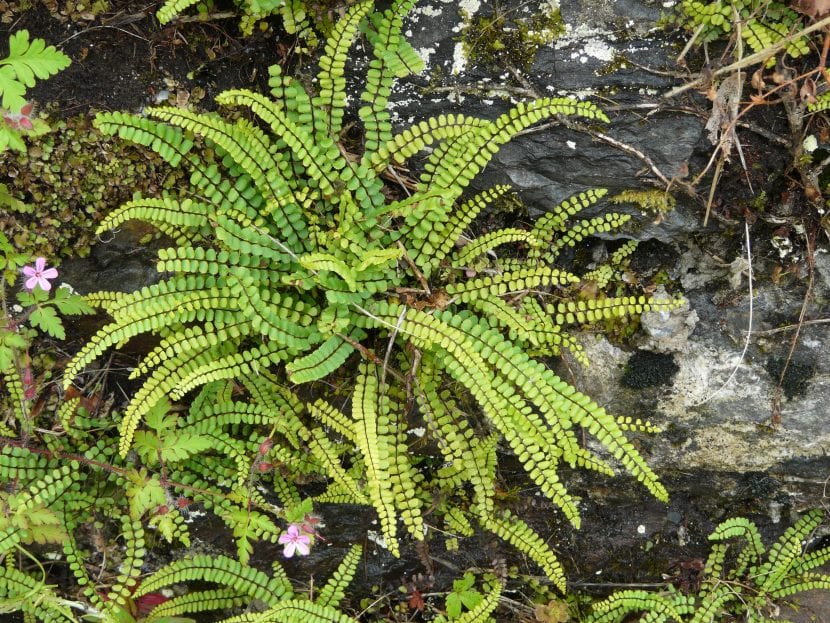
Image - Wikimedia / Père Igor
The fern is a plant that looks great both inside the home and in the shady corners of the gardens. But when we are going to choose one, we have to look for species that resist well the climate we have. In this sense, the Asplenium trichomanes It is not going to give us many problems, as it is one of the best resistant to frost.
As it also does not grow much, it is perfect to have in pots, whether they are hanging or not, although it can undoubtedly look great for example on a high surface, letting its leaves hang. Let's get to know him 🙂.
Origin and characteristics of Asplenium trichomanes
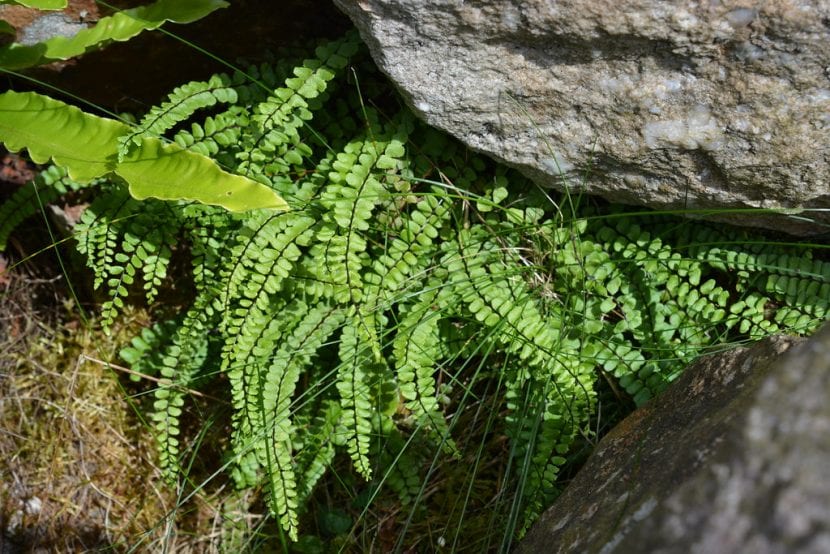
Image - Flickr / Ashley Basil
Known as small maidenhair, maidenhair, red adianto, falsia, trichomanes, arzolla de peña or politrique, it is a vivacious plant native to the warm and temperate regions of Europe, much of Asia, Africa, eastern Indonesia, southeastern Australia, Tasmania , New Zealand and Hawaii. Grows to a height of between 10 and 50 centimeters, depending on where the spores have germinated (the less space, the smaller it will stay).
The leaves, called fronds, pinnate, with 15 to 40 pairs of pinnae, sprout from a short, scaly rhizome from which hard, thin, black roots sprout. The sori are linear, and the sporangia mature throughout the year.
PREMIUM QUALITY
Three subspecies are known:
- Asplenium trichomanes subsp. trichomanes: prefers acid and sandstone soils.
- Asplenium trichomanes subsp. quadrivalens: prefers calcareous or limestone rocks.
- Asplenium trichomanes subsp. pachyrachis: prefers limestone rocks and walls.
What are their cares?
If you want to have a small maidenhair specimen, we recommend giving it the following care:
Location
It is a fern that it must be kept in an area where it is protected from direct sun, otherwise it would burn. As it is small, you can put it under the shade of tree branches for example, or behind a hedge or tall plants that you have in a pot.
Earth
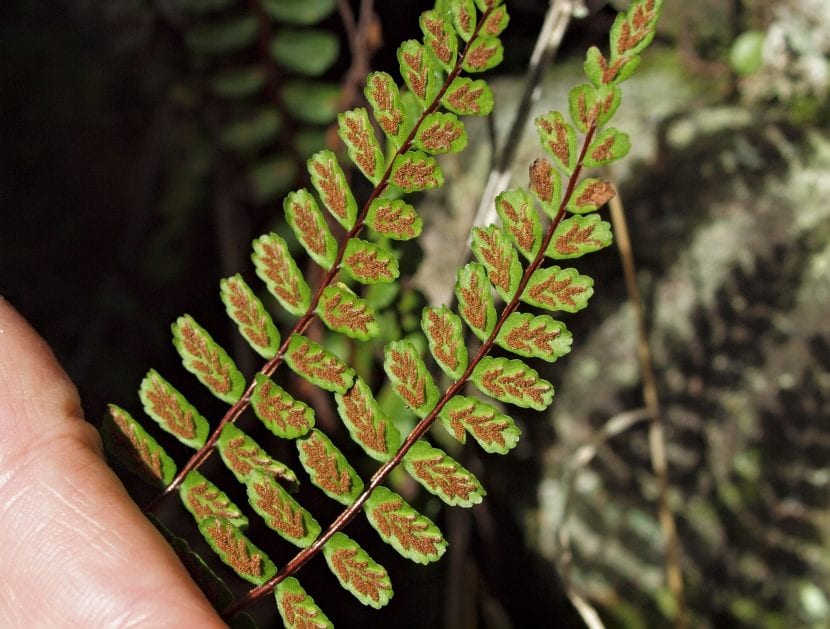
Image - Wikimedia / Luis Fernández García
It will depend on the subspecies, but in general it wants a fertile soil, with very good drainage.
- Flower pot: use universal growing medium (for sale here) mixed with 30% perlite (for sale here).
- Garden: it must have good drainage, and if you doubt the subspecies, a neutral pH (7, although if it is 6,5, nothing would happen either).
Irrigation
Frequent, but avoiding waterlogging. Generally, you will need to water an average of 3-4 times a week during the hottest and dry season, and an average of 2 times a week the rest of the year.
Of course, even if it's time to water the next day, if there's a forecast of rain, don't water. Rainwater is the best irrigation water in the world, so feel free to drop in some buckets to fill. Then you can use that water to irrigate.
Subscriber
From early spring to late summer It has to be paid with organic fertilizers. If you have it in a pot, use liquid fertilizers (such as guano, for sale here) following the indications specified on the package; and if you have it in the garden you can use worm castings, cow dung, or others.
Multiplication
It multiplies by spores in spring, following this step by step:
- First, you must fill a pot -with drainage holes- with universal substrate mixed with 30% perlite.
- Then water conscientiously.
- Then, place the spores on the surface, making sure they don't get clumped together.
- Finally, cover them with a thin layer of substrate, and water.
Now you just have to place the pot outside, in semi-shade, and keep the soil moist so that they germinate in about two weeks.
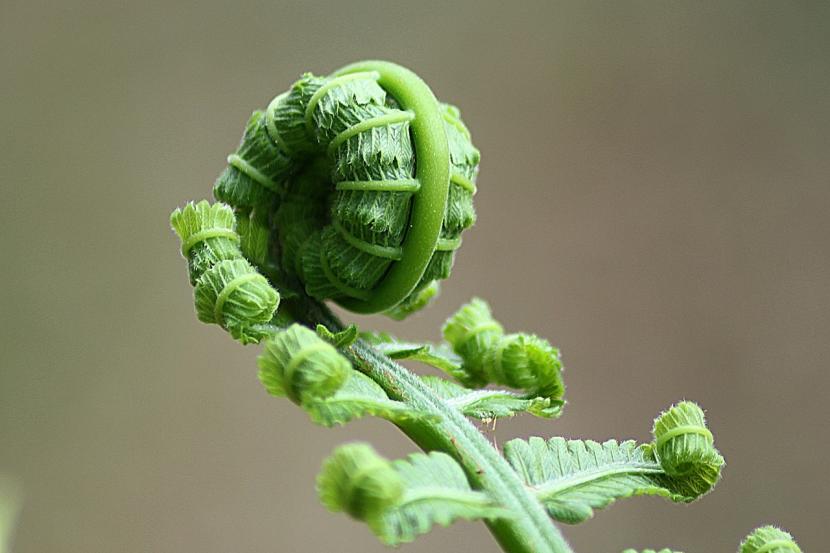
Planting or transplanting time
You can plant it in your garden or move it to a larger pot in spring, when the risk of frost has passed. The Asplenium trichomanes It is a fern that doesn't really take up much space, but in order for it to develop well and to be healthy, it is important that it is not kept in very small spaces.
Remember that the less room it has to grow, the smaller it will stay.
Rusticity
It resists frosts of up to -12ºC.
What uses is it given?
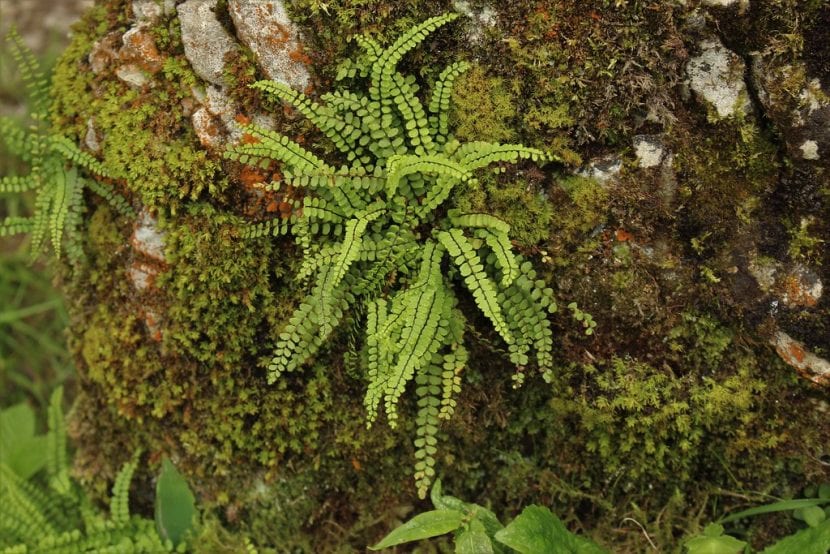
Image - Flickr / boguo
Ornamental
El Asplenium trichomanes it is a very decorative plant, which can be grown in pots, planters and of course also in the garden alone or with other ferns.
Medicinal
Besides as a garden plant, it is also used as emollient, expectorant and as an anti-inflammatory.
What did you think of the maidenhair? Without a doubt, it is a plant to take into account if you have some shady corners in the garden, or you have a balcony where the sunlight does not reach much. In addition, you can combine it with others of relatively low size, such as nephrolepsis, the Blechnum or the Pteris, although the latter are plants more sensitive to cold.
We hope you have learned a lot about this fern, and that you can enjoy it.